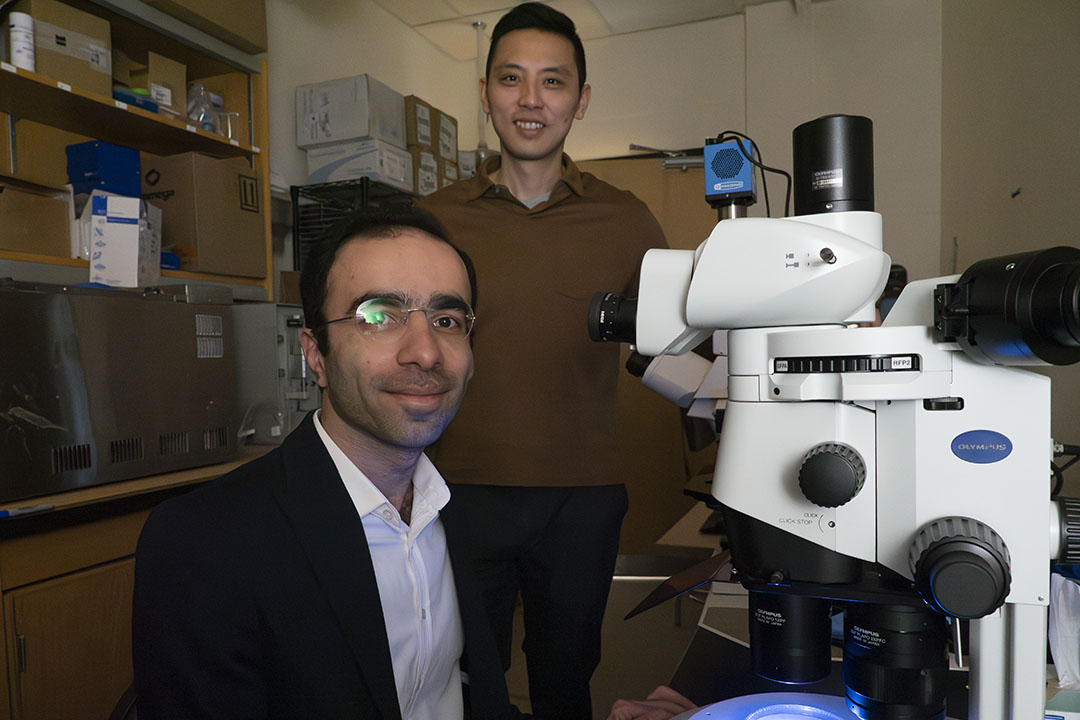
Protein from a round worm may unlock a cellular ‘fountain of youth’: USask research
SASKATOON – A one-millimetre-long worm and its genome may be key to understanding how human and animal cells age, according to new research from the University of Saskatchewan (USask) published in the journal Aging Cell.
Working with tiny, nematode worms called C. elegans, the USask research team identified a pair of genes responsible for clearing cells of the toxins which accumulate in the body and are responsible for aging. By inactivating genes called CCF-1 and PAL-1, the researchers found nematodes die 50 per cent faster than normal.
“If you remove CCF-1 gene from the worms, they become super sensitive to even the mildest amount of stressors, such as those which can cause neurodegeneration,” said Dr. Michael Wu (PhD), researcher in veterinary biomedical sciences at USask’s Western College of Veterinary Medicine (WCVM) and senior author of the paper. “These genes may be a key regulator in what causes premature aging in individuals.”
While the research was conducted in nematodes, approximately 40 per cent of nematode genes—including CCF-1 and PAL-1—have the same function in humans. In humans, CCF-1’s equivalent is named CNOT7 and PAL-1 is called Cdx2.
“These genes can be traced back to an individual human’s ability to fight off chemical stressors at the cellular level, which then is directly linked to the rate at which they age,” said Wu. “Our goal is, at the basic, fundamental level, to define what drives aging—age is the primary driving factor of basically every chronic human disease.”
“When you age, you increase susceptibility to getting cancer. When you age, you’re more prone to neurodegeneration. When you age, your metabolism slows down, and you’re more susceptible to the development of diabetes or cardiovascular failure,” he said.
Much of the research which involved screening all 20,000 nematode genes—a process which took over six months to complete—was conducted by USask master’s student Hadi Tabarraei and doctoral student Brandon Waddell, aided by undergraduate students Kelly Raymond and Sydney Murray. The team also included University of Florida researchers Dr. Ying Wang (PhD) and Dr. Keith Choe (PhD).
Nematodes were exposed to cadmium, a heavy metal which can accumulate in the body, and the neurotoxin acrylamide, mimicking the cellular stress conditions an organism experiences as part of the aging process. Using a technique called RNA interference, the researchers inactivated one gene at a time, finding nematodes with CCF-1 inactivated were more vulnerable to the chemicals and died at a much faster rate.
“We were following hundreds of worms at different conditions, and tracking how long these worms go from birth to death,” said Wu. “Nematodes only live about two to three weeks on average, so we can correlate our genetic data to a phenotype at the whole-organism level.”
After realizing the importance of the CCF-1 gene, the research team discovered that inactivating the PAL-1 gene created an almost identical response—the two genes work in concert to regulate the expression of multiple genes in responding to chemical stressors in the body.
The next steps in the research involve further investigation into the cellular processes in the nematode model to identify pharmacological compounds that can effectively turn on and off the genes in a controlled manner. Wu expects to pinpoint those compounds in the next five years and, in tandem, he intends to replicate the research with human cell lines and humanized mouse models, working with collaborators.
“If you want to measure whether [a pharmacological] compound has an impact on lifespan or disease development, that can take three to five years because mice can live for two years and more, normally,” said Wu. “With an extended lifespan, it’s probably four to five years down the road.”
The research was funded by a Natural Sciences and Engineering Research Council Discovery Grant, and made open access through the WCVM Publication Fund.
-30-
For media inquiries, contact:
Victoria Dinh
USask Media Relations
victoria.dinh@usask.ca
306-966-5487

